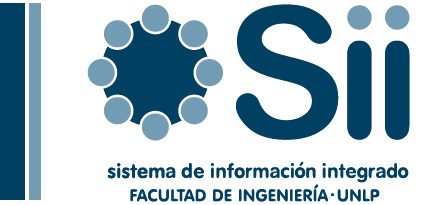Engineering Mechanics 3 [libro electrónico] : ; Dynamics / by Dietmar Gross...[et al.].
Tipo de material: TextoDetalles de publicación: Berlin, Heidelberg : Springer Berlin Heidelberg : Imprint: Springer, 2014.Edición: 2nd ed. 2014Descripción: ix, 365 p. : ilTipo de contenido:
TextoDetalles de publicación: Berlin, Heidelberg : Springer Berlin Heidelberg : Imprint: Springer, 2014.Edición: 2nd ed. 2014Descripción: ix, 365 p. : ilTipo de contenido: - text
- computer
- online resource
- 9783642537127
- TA349-359
 Libro electrónico
Lista(s) en las que aparece este ítem:
Ebooks
Libro electrónico
Lista(s) en las que aparece este ítem:
Ebooks
Introduction -- 1 Motion of a PointMass -- 1.1 Kinematics -- 1.1.1 Velocity and Acceleration -- 1.1.2 Velocity and Acceleration in Cartesian Coordinates -- 1.1.3 Rectilinear Motion -- 1.1.4 Planar Motion, Polar Coordinates -- 1.1.5 Three-Dimensional Motion, Serret-Frenet Frame -- 1.2 Kinetics -- 1.2.1 Newtonâ_Ts Laws -- 1.2.2 Free Motion, Projectiles -- 1.2.3 Constrained Motion -- 1.2.4 Resistance/Drag Forces -- 1.2.5 Impulse Law and Linear Momentum, Impact -- 1.2.6 Angular Momentum Theorem -- 1.2.7 Work-Energy Theorem, Potential Energy, Conservation of Energy -- 1.2.8 Universal Law of Gravitation, Planetary and SatelliteMotion -- 1.3 Supplementary Examples -- 1.4 Summary -- 2 Dynamics of Systems of Point Masses -- 2.1 Fundamentals -- 2.2 Linear Momentum for a System of Point Masses -- 2.3 AngularMomentum Theorem for a System of Point Masses -- 2.4 Work-Energy Theorem, Conservation of Energy for a System of Point Masse.s -- 2.5 Central Impact -- 2.6 Bodies with Variable Mass -- 2.7 Supplementary Examples -- 2.8 Summary -- 3 Dynamics of Rigid Bodies -- 3.1 Kinematics -- 3.1.1 Translation -- 3.1.2 Rotation -- 3.1.3 General Motion -- 3.1.4 Instantaneous Center of Rotation -- 3.2 Kinetics of the Rotation about a Fixed Axis -- 3.2.1 Principle of Angular Momentum -- 3.2.2 Mass Moment of Inertia -- 3.2.3 Work, Energy, Power -- 3.3 Kinetics of a Rigid Body in Plane Motion -- 3.3.1 Principles of Linear and Angular Momentum -- 3.3.2 Impulse Laws, Work-Energy Theorem and Conservation of Energy -- 3.3.3 Eccentric Impact -- 3.4 Kinetics of a Rigid Body in Three Dimensional Motion -- 3.4.1 Principles of Linear and Angular Momentum -- 3.4.2 Angular Momentum, Inertia Tensor, Eulerâ_Ts Equations -- 3.4.3 Support Reactions in Plane Motion -- 3.4.4 The Torque-Free Gyroscope -- 3.5 Supplementary Examples -- 3.6 Summary -- 4 Principles of Mechanics -- 4.1 Formal Reduction of Kinetics to Statics -- 4.2 Dâ_TAlembertâ_Ts Principle -- 4.3 Lagrange Equations of the 2nd Kind -- 4.4 Supplementary Examples -- 4.5 Summary -- 5 Vibrations -- 5.1 Basic Concepts -- 5.2 Free Vibrations -- 5.2.1 Undamped Free Vibrations -- 5.2.2 Spring Constants of Elastic Systems -- 5.2.3 Damped Free Vibrations -- 5.3 Forced Vibrations -- 5.3.1 Undamped Forced Vibrations -- 5.3.2 Damped Forced Vibrations -- 5.4 Systems with two Degrees of Freedom -- 5.4.1 Free Vibrations -- 5.4.2 Forced Vibrations -- 5.5 Supplementary Examples -- 5.6 Summary -- 6 Non-Inertial Reference Frames -- 6.1 Kinematics of Relative Motion -- 6.1.1 Translating Reference Frames -- 6.1.2 Translating and Rotating Reference Frames -- 6.2 Kinetics of Relative Motion -- 6.3 Supplementary Examples -- 6.4 Summary -- 7 Numerical Simulation -- 7.1 Introduction -- 7.2 First-Order Initial-Value Problems -- 7.3 Second-Order Initial-Value Problems -- 7.4 Supplementary Examples -- 7.5 Summary -- Appendix: Numerical Integration -- Index.
Dynamics is the third volume of a three-volume textbook on Engineering Mechanics. It was written with the intention of presenting to engineering students the basic concepts and principles of mechanics in as simple a form as the subject allows. A second objective of this book is to guide the students in their efforts to solve problems in mechanics in a systematic manner. The simple approach to the theory of mechanics allows for the different educational backgrounds of the students. Another aim of this book is to provide engineering students as well as practising engineers with a basis to help them bridge the gaps between undergraduate studies, advanced courses on mechanics and practical engineering problems. The book contains numerous examples and their solutions. Emphasis is placed upon student participation in solving the problems. The contents of the book correspond to the topics normally covered in courses on basic engineering mechanics at universities and colleges. Volume 1 deals with Statics; Volume 2 contains Mechanics of Materials.
No hay comentarios en este titulo.
